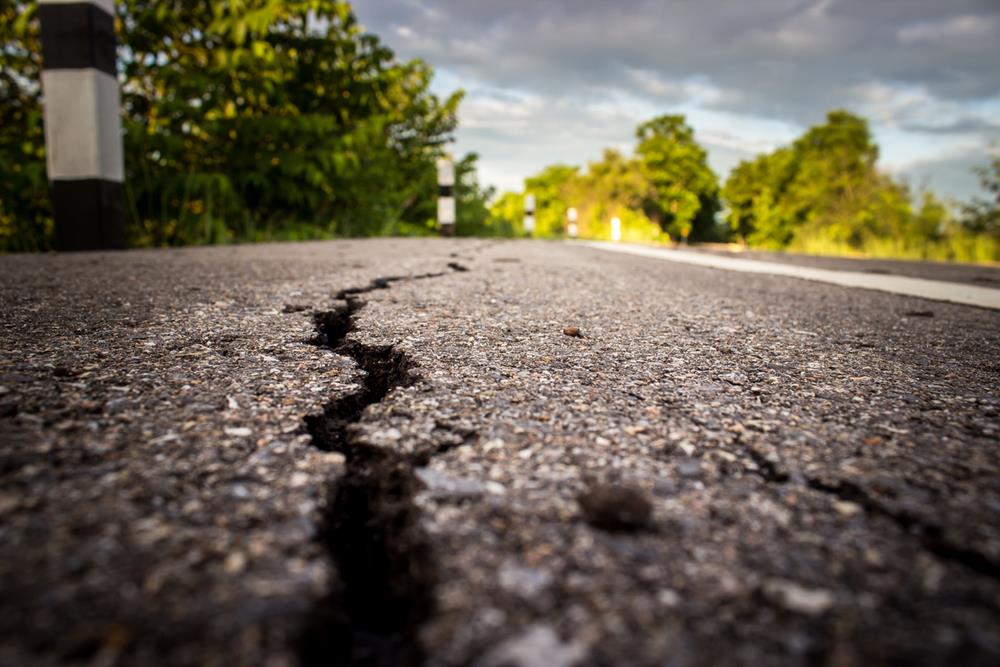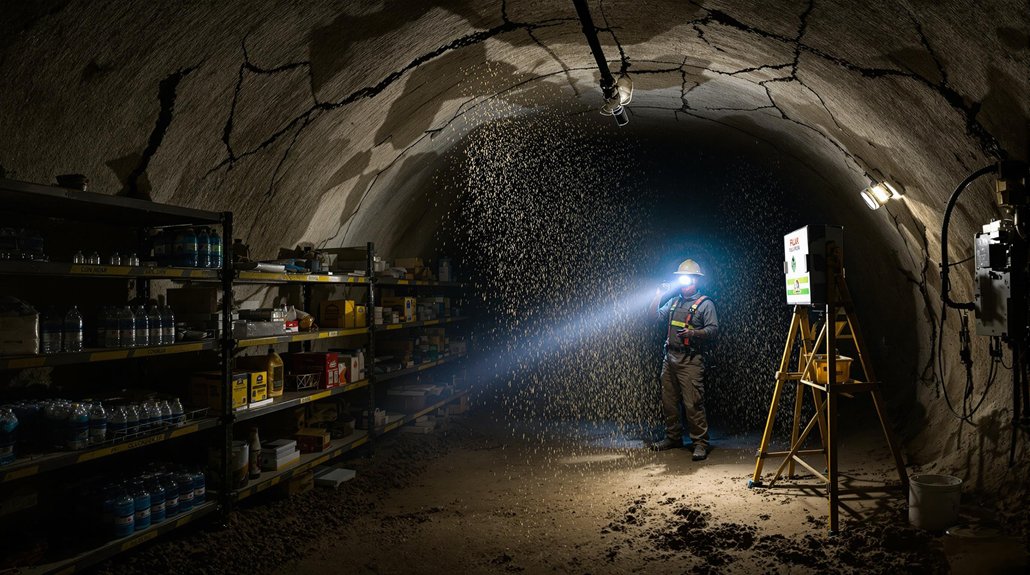Is It Safe to Be Underground During an Earthquake?

When the ground starts to shake, most people instinctively look for the safest place to shelter. But what if you’re already underground—in a basement, subway, parking garage, or tunnel? Does being below the surface offer extra protection, or could it actually put you at greater risk?
In this article, we’ll explore the safety of underground spaces during earthquakes, look at how these structures are built to withstand seismic activity, and share expert advice on what to do if you find yourself below ground when an earthquake hits.
Understanding Earthquake Dynamics and Wave Propagation

Understanding earthquake dynamics and wave propagation is essential to grasp how seismic events affect different environments. When an earthquake occurs, elastic waves—P waves, S waves, and surface waves—travel through the earth. The intensity of shaking you feel underground depends largely on wave propagation and your proximity to the seismic source.
Underground environments, like deep caves or mines, might experience less shaking than surface structures due to their depth and geological conditions. However, being close to a seismic source can increase shaking intensity, even underground. Historical accounts reveal that miners often don't feel distant earthquakes, highlighting location's role in sensation.
Surface waves typically cause the most damage, so understanding these dynamics helps assess safety in underground settings.
Assessing Structural Integrity in Underground Spaces

Evaluating the safety of underground areas during and after an earthquake starts with understanding their structural integrity.
Underground structures like tunnels and subways are typically built to withstand seismic forces and often perform better than surface buildings. A notable example is Los Angeles’ Metro Red Line, which remained undamaged during the 1994 Northridge earthquake thanks to its strong engineering.
Larger underground chambers are generally safer, as their size and design provide extra support that helps reduce the risk of collapse.
After any seismic event, structural inspections are essential. Even minor damage can block escape routes or weaken a structure, making quick assessments critical to ongoing safety.
In areas with loose, wet, or sandy soil, liquefaction—a process where the ground temporarily loses strength during shaking—can pose a serious threat. Engineers typically use soil stabilization techniques to reduce this risk and protect underground infrastructure.
Key Points:
Tunnels and underground facilities often outperform surface buildings in earthquakes.
Larger underground spaces are less likely to collapse.
Post-earthquake inspections are crucial for safety and access.
Soil stabilization helps prevent liquefaction in vulnerable areas.
Health and Stress Considerations for Staying Underground

When thinking about staying underground during an earthquake, it’s important to consider more than just structural safety—your physical and mental well-being also plays a big role.
Being in a familiar underground space, such as a well-known basement or shelter, can help reduce panic and lower stress levels during a quake. Larger underground chambers typically offer better protection than narrow tunnels, as they are less likely to collapse and allow more room to move or take cover.
In the rare event of a collapse, physical strength might help you dig your way out. However, it’s essential to be realistic about your abilities. Trying to move heavy debris without proper support can lead to muscle strain or injury. Always prioritize safety and avoid overexertion.
Routine inspections of underground spaces are also important. Even if the structure seems strong, undetected cracks or damage could weaken it over time, especially after smaller quakes.
Ultimately, psychological comfort, physical capability, and the condition of the structure all influence whether staying underground is the safer choice. Assess these factors carefully to make the best decision in an emergency.
Rescue and Recovery Challenges in Subterranean Environments
Rescue and recovery efforts in underground spaces present unique and serious challenges. One of the biggest issues is locating trapped individuals. Because these areas are often out of sight and difficult to access, it can take hours—or even days—for rescue teams to reach those in need.
Communication is another major obstacle. Radio and cellphone signals often don’t penetrate underground structures, making it hard for teams to coordinate efforts or relay updates in real time.
Poor visibility adds to the difficulty. Darkness and dust can limit what rescuers can see, so they often rely on specialized lighting and thermal imaging equipment to locate survivors. Natural disasters, such as severe thunderstorms, can also exacerbate these challenges by causing additional structural instability or flooding in subterranean environments.
Injuries can complicate escape or extraction. Narrow passages and limited mobility make it harder to move the injured to safety. In these situations, the availability of emergency supplies like food, water, and first-aid materials becomes crucial—but those essentials are often limited in underground areas.
Overall, rescue operations in subterranean environments require careful planning, specialized tools, and quick response to overcome the unique hazards these spaces present.
Comparing Safety: Underground vs. Aboveground During Seismic Events
Moving from rescue challenges to contemplating safety during seismic events, it's clear that underground and aboveground environments each have unique risks and benefits.
Underground structures are generally safer as they're designed to withstand seismic loads, reducing the risk of collapse. During earthquakes, people in underground chambers often experience less stress due to a supportive environment, unlike those aboveground facing falling debris.
However, aboveground evacuation offers immediate safety, letting you move to higher ground and adapt quickly. Yet, underground systems like the Metro's Red Line have proven resilient in past quakes, highlighting their structural integrity.
Still, poorly designed tunnels or those in liquefaction-prone areas pose risks, emphasizing the critical need for proper engineering to guarantee safety below ground.
Addressing Public Perception and Engineering Solutions
While public perception might lean towards skepticism about underground safety during earthquakes, engineering solutions have consistently proven these spaces to be robust havens. Tunnels are designed to handle seismic loads effectively, ensuring their structural integrity even in powerful quakes.
Historical evidence, like the resilience of the BART tube during the 1989 World Series Earthquake, underscores this reliability. Experts assert that underground structures provide improved safety compared to aboveground spaces, which are more susceptible to falling debris.
- Tunnels maintain operational status post-earthquake, validating their design.
- Structural integrity is prioritized, with emergency systems improving tunnel safety.
- Continuous design improvements bolster resilience against seismic threats.
- People often feel safer in tunnels than high-rise buildings during tremors.
Embrace the security provided by well-engineered underground spaces.
Preparing for Seismic Events With Emergency Preparedness

Understanding the importance of emergency preparedness can greatly improve your safety during seismic events. Start by identifying safe evacuation routes and shelter locations, both aboveground and underground.
Familiarize yourself with the structural integrity of local underground spaces; chambers often provide better support than tunnels. This knowledge can be essential, especially when considering risks like liquefaction that might impact underground structures.
Confirm that your emergency contact information is easy to access, and keep your communication devices charged for potential coordination with rescue teams.
Participating in community training will improve your response strategies and decision-making skills during earthquakes. By preparing in advance, you can guarantee a swift and safe evacuation, protecting yourself and others in your community.
Exploring Historical Accounts of Earthquake Experiences Underground

When thinking about earthquake safety, it's useful—and often surprising—to look at historical accounts of how people experienced quakes while underground.
For example, miners in Arizona frequently reported not feeling earthquakes at all. This suggests that underground environments, especially those carved into solid rock, may experience less ground movement than surface areas. Scientific research backs this up, showing that seismic waves tend to cause smaller displacements in deep, stable rock formations.
One notable case is documented in "Effects of an Earthquake in a Mine at Tombstone, Arizona", where miners remained largely unaffected while surface structures experienced noticeable shaking. These kinds of accounts suggest that being underground can, in some cases, offer a layer of natural protection.
However, the experience isn't always the same. Factors like how close you are to the earthquake’s epicenter and the type of surrounding geology can affect how much shaking is felt. Some studies even debate whether certain underground areas, such as caves, register quakes at all.
Key Points:
Miners often report not feeling earthquakes underground.
Solid rock can reduce the amount of seismic movement.
Historical records support the idea of reduced shaking below ground.
Geology and epicenter distance greatly influence what’s felt underground.




